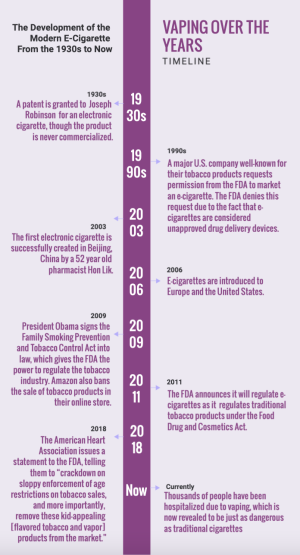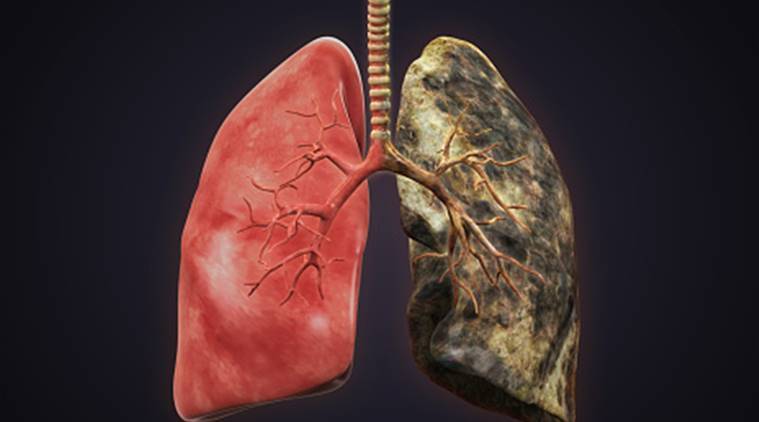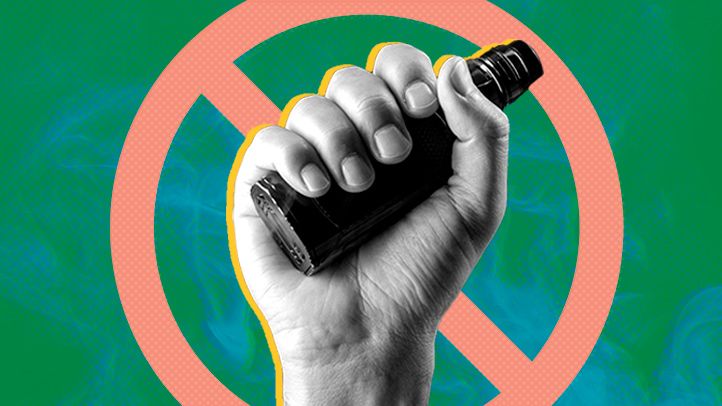Vaping on the rise
December 17, 2022
Vape pens are electronic cigarettes filled with nicotine. The number of not only lung-related illnesses but also heart-related illnesses in teens due to vaping has jumped drastically over the past couple of years. Teens are getting their hands on these vape pens on account of the false advertisement from businesses that these devices are for minors. We must find ways to prevent more young kids from falling into the nicotine addiction trap and help those who are addicted break through their obsession.
How the e-cigarette trend evolved

How vaping affects your health
More than three million students use tobacco products, and out of these students, the majority of them use e-cigarettes. Vaping has drastically increased in popularity in recent years, especially among teens. However, despite the large population of people who vape, many remain unaware of the danger e-cigarettes pose to their health.
E-cigarettes contain a variety of dangerous ingredients that harm an individual’s body, especially one’s lungs. The chemical diacetyl present in e-cigarette flavorings increases the risk of lung disease in someone who vapes. Diacetyl can also impair small passageways in the lungs. When these passageways are harmed, the risk for serious lung diseases such as bronchiolitis obliterans, more commonly known as “popcorn lung,” rises. “Popcorn lung” has no lasting cure, causing chronic symptoms like shortness of breath and wheezing. Along with diacetyl, acrolein in vapes can lead to an increased risk of asthma and lung cancer in addition to acute lung injury. Tetrahydrocannabinol (THC) e-cigarettes also include vitamin E acetate, which thickens vaping liquids. This oily substance has been linked to EVALI (e-cigarette or vaping use-associated lung injury) cases, and in people with severe damage from vaping, vitamin E could be found in their lungs. Moreover, as a result of oily substances like vitamin E, lungs become inflamed and more susceptible to lipoid pneumonia that leads to shortness of breath and in some cases, coughing up blood. E-cigarettes have severe effects on the heart, too, due to aldehydes such as formaldehyde that heighten one’s likelihood of having a cardiovascular disease.
The nicotine in e-cigarettes also damages brain development. Many people who vape are young and still developing certain brain functions relating to self-control and maturation. However, when individuals repeatedly vape, their impulse control will decrease, and they will be likely to acquire mood disorders. Nicotine also changes the formation of synapses in the brain, which interferes with how neurons communicate. As a result, one’s cognitive development, memory and attention might worsen.
Even though nicotine in e-cigarettes is incredibly harmful, it can also be extremely addictive. While cigarettes have a clear starting and ending point, users can take continuous puffs with e-cigarettes, so it can be more challenging to stop. Furthermore, an e-cigarette has three times the amount of nicotine as one cigarette pack, making it even more addictive.
Although this addiction is difficult to overcome, many clinics have developed smoking cessation programs that help addicts quit. Even though vapes have grown more common nowadays, it is imperative to limit consumption and seek help if necessary to avoid damaging one’s lungs, heart, and brain.
Comparing how vaping changes your lungs
Juul falsely advertises its products
As of April 2021, JUUL was the most popular reusable e-cigarette company in the world. Feeding into teens and adults’ unhealthy addiction to vaping, each JUUL contains 40 mg of nicotine; equivalent to the amount of nicotine in one pack of cigarettes. Recently, JUUL has been under deep investigation, bringing light to the real horrors of vaping.
JUUL launched its company of e-cigarettes in 2015. Since then, they have released over 50 “pod” flavors. These range from simple flavors like mint and mango, to intricate flavors like creme brulee and apple crumble. Along with its appealing flavors, JUUL advertises its products with bright colors. Specifically targeted at teens and young kids, JUUL uses cartoons, young influencers, and bright colors to intrigue consumers.
Much of the blame for the vaping epidemic is directed toward JUUL. Disclosing the harmful effects of using one of the products in advertisements has led to controversy surrounding the company.
After their two-year-long investigation, this past summer the FDA banned the sale of all JUUL products in the US. The company has to pay $440 million to settle this investigation and is facing other repercussions. Thirty-three states participated in the investigation, and it is the biggest legal threat an e-cigarette company has had to face. The money will be paid over six years. From the money they receive, Connecticut has decided that $16 million will go towards educating young kids and teens about vaping. There will be teaching requirements in schools with the hopes of preventing kids from vaping. Along with this, JUUL has agreed to “not using cartoons, paying social media influencers, depicting people under 35, advertising on billboards and public transportation or placing ads in any outlets unless 85% of the publication’s audience are adults” according to CBS.
In addition to this case, JUUL is also facing hundreds of other lawsuits from users that claim to be misled by their products. There are many lawsuits against JUUL from users that developed an addiction to their products as well.
E-cigarettes have been around for a while and the FDA acknowledges the harmful effects of vaping with this investigation. Vaping has taken over the world. The FDA urges teens, adults, and other users of e-cigarettes to quit now before it’s too late.
The role of each piece in a vape device
How East should deal with the vaping issue
Vaping has become an epidemic in high schools across the country. With vaping companies targeting teenagers using a variety of flavors and colors, students are now more prone to vaping than ever.
The school district as a whole has taken this on headfirst and incorporated the recent vaping problem into the preexisting anti-smoking curriculum. Students are now taught the dangers of all kinds of nicotine products in nearly every health class they take, spanning from elementary school through high school.
“It was really drilled into us that any kind of nicotine products are really bad for us,” said Prisha Mathur (‘25), “the schools show us a lot of pictures of messed-up lungs, which freaks most people out.”
In the end, the best way to keep teenagers from vaping in school is to prevent it. No matter what efforts the school makes, from locking the bathroom doors between classes to penalizing students found with vapes, none of it could be as effective as keeping those students from vaping in the first place.
Recognizing this, the middle and high schools in the district have recently started to take on a more direct approach to the student vaping crisis. Teachers are instructed to show students the “real truth” of smoking and vaping by presenting pictures, videos, and medical reports about young teenagers who vaped and will never recover.
“It’s scary to see these kids our age who made one mistake, and now their quality of life can never be as good as it once was,” said Mathur, “but it scares a lot of us into being smart enough not to do it.”
Students across Cherry Hill High School East share this opinion. The images and videos shown in health classes may be disturbing, but they are leading many teenagers to a path of staying vape-free and healthy.
Breaking through the addiction
Vaping has become more and more of a common activity for young teens throughout the past couple of years. Teens often say “I’m just going to try it once” when vaping for the first time. From that one trial, vaping often becomes a once-in-a-while activity, a when I’m stressed activity, a once-a-week activity, and eventually becomes an everyday activity. Many people build a strong dependence on e-cigarettes at a young age, which is troublesome considering it gets harder to quit the older and more addicted people get to vaping. The more time that goes by, the more strenuous people’s quitting experience becomes, which is why everyone should start by making a plan.
First things first, let’s answer the question: am I addicted to e-cigarettes? Vapers often have trouble realizing and accepting that they’re addicted to nicotine. Once they have a clear idea of how much nicotine is entering their bodies daily, e-cigarette users should come up with a reason to stop vaping. Some people choose to stop vaping to protect their lungs, stop wasting their money on these products, prevent losing friendships/family bonds, etc. Next, people should identify their triggers such as specific groups of people who vape, stores that sell vape products, etc. Finally, people should prepare for success by taking themselves out of situations that might cause them to relapse into old habits.
E-cigarette users who are attempting to quit vaping often carry materials on them at all times to help with nicotine cravings. Some common strategies are chewing gum, eating lollipops or other hard candies, and chewing on soft materials such as straws. It’s important for people to find new ways to occupy themselves when they feel the need to vape.
Other ways to keep busy while quitting vaping are taking walks, listening to music, drinking water, meditating, exercising, and talking/spending time with people who don’t vape.
“Over time, your brain and body get used to having nicotine, which means you may have nicotine withdrawal symptoms when you quit vaping,” teen.smokefree.gov says. Some withdrawal symptoms might include headaches, anxiety, fatigue, hunger, trouble sleeping, feeling jittery, etc. Vapers can control these symptoms by staying hydrated, attempting to get lots of sleep, staying prepared for when cravings arise, and having something handy like gum or straws to chew on when they feel the need to vape.
Another resource to help e-cigarette users stop vaping is downloading an addiction tracker app. These apps track how long you’ve been ‘vape free’ and often provide resources/helpful techniques to cope with withdrawal symptoms. Some popular addiction tracker apps include “Quit Vaping,” “I Am Sober,” and “Smoke Free – Quit Smoking Now.”
Attempting to get over an addiction to nicotine is a tough challenge that will take time to accomplish. It’s important to recognize that some days are going to go smoother than others, and talking to a parent, friend, or doctor is always a good option to help assist in this process.




